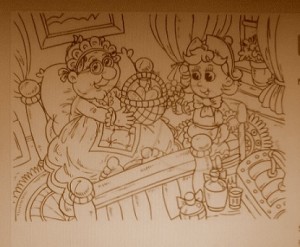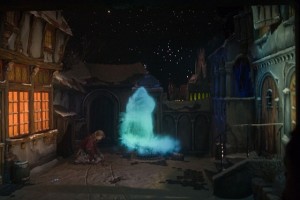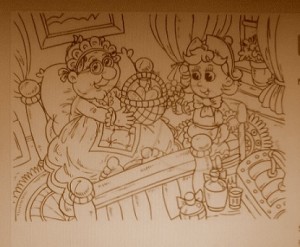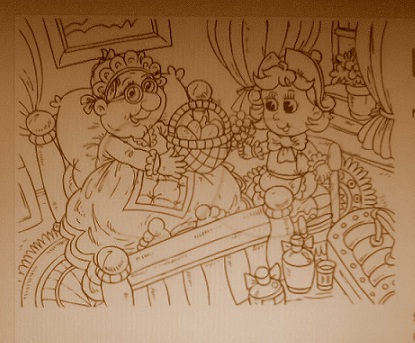By YOLANDA L. PUNSALAN
 THE noisier, the better, the more prosperous. This has been part of the cultural conditioning in welcoming the New Year.
THE noisier, the better, the more prosperous. This has been part of the cultural conditioning in welcoming the New Year.
But a canon of inspirational stories centering on New Year’s Day itself should form part of the celebration arsenal as one looks forward to twelve months of living dangerously or peacefully, just how one wants it.
The Great Dane himself, Hans Christian Andersen, whose hundreds of stories have delighted children the world over, and whose 200th birth anniversary was a year-long festival in Denmark, wrote two enchanting New Year sketches: “The Mail Coach Passengers”, written in 1861 and “The Little Match Girl”, penned in December 1845.
Bumping and banging away as the sounds of New Year’s eve, twelve passport carrying passengers rode the mail coach, and they kept passing good wishes upon each other: “ a pretty wife, plenty of money, and no reason for care”. When they reached their destination, each passenger introduced himself thus: January—a merchant who keeps his accounts with him; February—Prince Carnival; Master March—the personification of fasting; April Fool, also the house agent and the manager of funerals (in Denmark, it is the custom to change houses during this month and it is also when the weather is most unhealthy).; Miss May—who wore anemones in her hair, smelled of wild thyme and sang in the forest woods; Mistress June, a young, pretty and proud lady; her younger brother July, clad in summer wear; Mother August, a thorough housemaker and a wholesale fruit dealer;September, the master of colors, November, a coughing woodcutter who saw to it he will make the skates to be used soon; and old Mother December , who had a growing fir tree in a pot and a pocket storybook.
 “The Little Match Girl” tells of a very poor, hungry girl, out in the freezing snow, unslippered, and with matches to sell before she reaches home, lest her father beat her up if they are unsold. All the people are tucked in their warm, well-lit homes, as she senses the flavors of roast goose. She rests, so tired, so cold, outside the corner of a house and rubs the matches to warm herself, but the light from the matches warm her but briefly, until her last match is lit, and she sees the vision of her dead grandmother, the only creature who was kind to her. She remembers her grandma’s words: “When a star falls, a soul mounts up to God”. The next day, the smiling, rosy-cheeked girl is found frozen dead, but no one knew the splendor she saw when her grandmother took her to the heavens.
“The Little Match Girl” tells of a very poor, hungry girl, out in the freezing snow, unslippered, and with matches to sell before she reaches home, lest her father beat her up if they are unsold. All the people are tucked in their warm, well-lit homes, as she senses the flavors of roast goose. She rests, so tired, so cold, outside the corner of a house and rubs the matches to warm herself, but the light from the matches warm her but briefly, until her last match is lit, and she sees the vision of her dead grandmother, the only creature who was kind to her. She remembers her grandma’s words: “When a star falls, a soul mounts up to God”. The next day, the smiling, rosy-cheeked girl is found frozen dead, but no one knew the splendor she saw when her grandmother took her to the heavens.
Robert Flynn writes in lighthearted stream of consciousness style of his happiness walk towards home, appreciating this first day of the year, and valuing the “moment that is now”, as he blesses all those he sees—-a father and his toddler son, lovers on a tandem bike, an old woman gazing emptily into space. These “moments of the now” he will keep as treasures and draw strength from them when hard times taunt him over. His piece is entitled “New Year’s Day”.
Anne Emilie Poulsson (1853-1939) , an American campaigner for early childhood education and the kindergarten movement, wrote “The Fairy’s New Year Gift”, about Carl and Philip, two young boys who received each from her a beautiful book, the pages of which were as white as snow. After several months have passed, the Fairy asks them to return the books to her for she has to surrender them to Father Time.
 “Little White Robin Hood” by Marion Mallette Thornton is adopted from the older nursery tale “Little Red Riding Hood”. This time, Leslie, a good natured child, receives an unusually beautiful fur lined white coat with a black velvet hood. This inspires her to reenact the “Little Red Riding Hood” story, as she dons the garment and sets out to visit Granny Graham down the hill, carrying sweet, big oranges. Granny plays out the role of the big bad wolf, but in the end as Granny eats the orange instead of eating the kind Leslie, they both laugh believing that their version of the story is so much better,and non-violent.
“Little White Robin Hood” by Marion Mallette Thornton is adopted from the older nursery tale “Little Red Riding Hood”. This time, Leslie, a good natured child, receives an unusually beautiful fur lined white coat with a black velvet hood. This inspires her to reenact the “Little Red Riding Hood” story, as she dons the garment and sets out to visit Granny Graham down the hill, carrying sweet, big oranges. Granny plays out the role of the big bad wolf, but in the end as Granny eats the orange instead of eating the kind Leslie, they both laugh believing that their version of the story is so much better,and non-violent.
“The Little New Year” by Ellen Robena Field, a critically acclaimed American author of children’s literature is the story of Little New Year, who appears to Maurice in his dream, with a cart of gifts. He teaches Maurice the happiness of thoughtful giving to others—-especially the old, the sick, the forsaken and forgotten.
“The Twelve Months” by Alexander Chodsvko, is a Slav fairy tale about a widow with two daughters: ugly and mean Helen, her own, and kind and beautiful Marouckla, her dead husband’s daughter. In their inhumanness, the mean duo compel Marouckla to gather fresh violets, and then later, the sweetest strawberries in the dead of the wintry forest. It has a happy ending.
It’s good to begin the New Year with a fresh slate, illumined by these charming , childlike stories that never grow obsolete imprinting them with one’s personal streaks and commands before they are turned over to Father Time.
